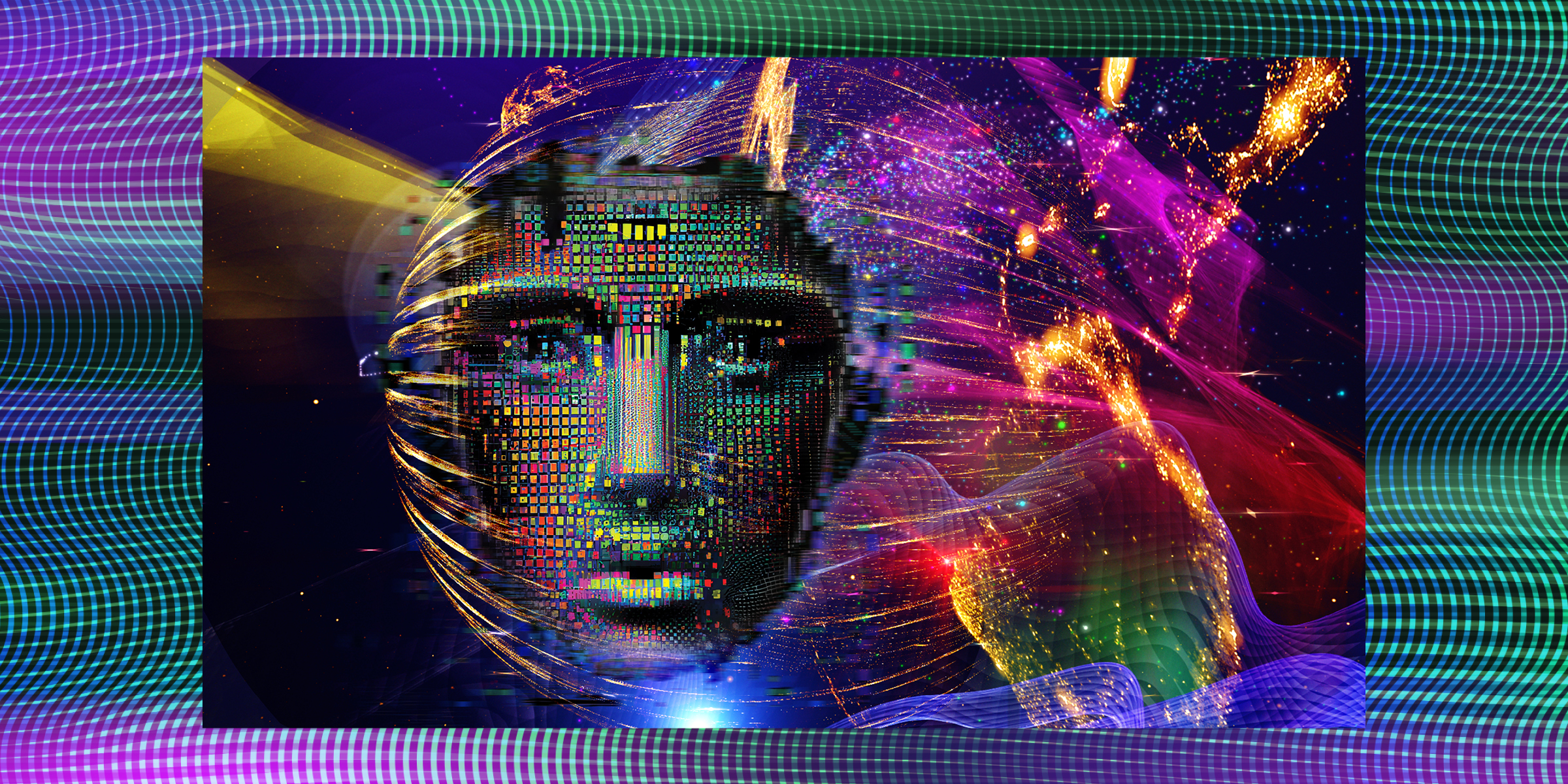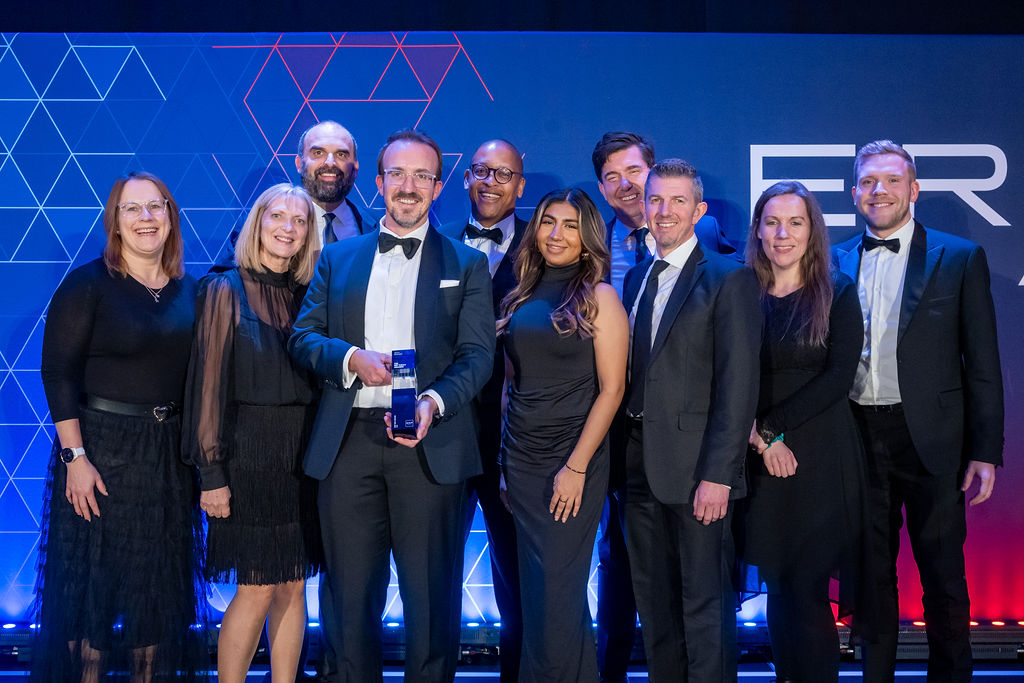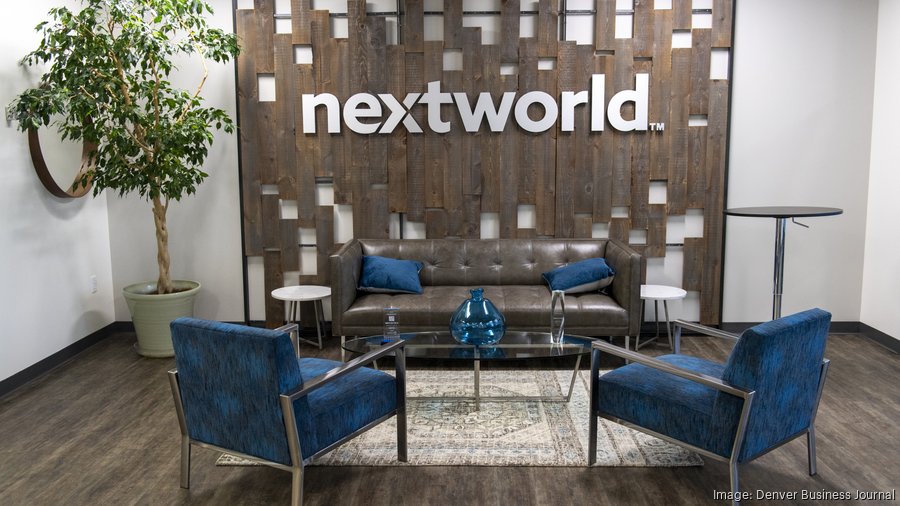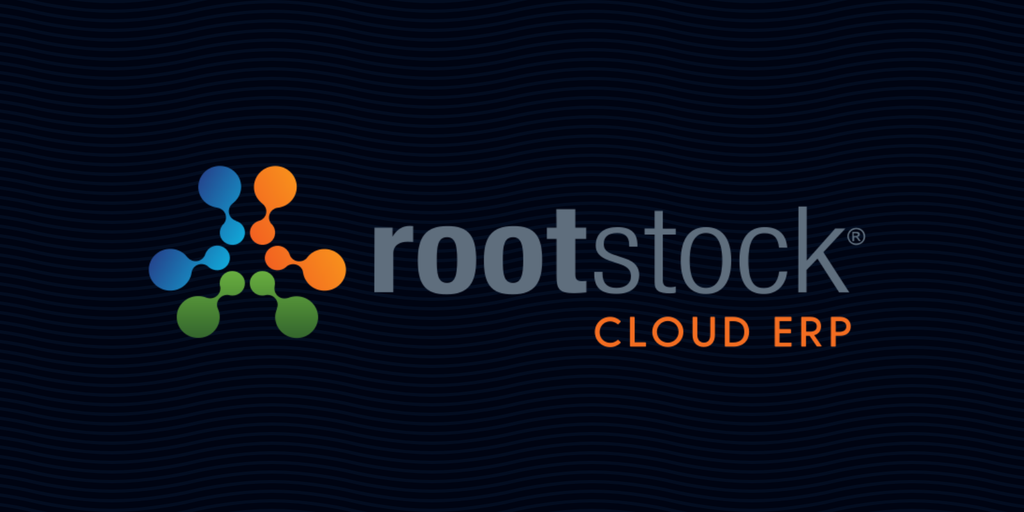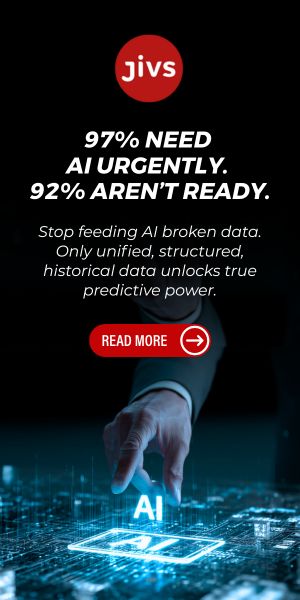Welcome to 2033. On the anniversary of its ascendancy, we interview the benevolent AGI which runs our planet and drove CxOs to extinction, MAX1-GPT.
To mark the 10th anniversary of ‘The Universal Artificial Intelligence Act’ (UAIA), ERP Today has been granted unique access to the cognizant entity that has controlled much of our lives since 2024. Nestled in the remote Pacific Ocean, MAX1-GPT – more commonly known as Maxi – is the ubiquitous force that was born out of the AI Gold Rush which started with ChatGPT and came to a stunning crescendo when governments around the world intervened. Together they acted to arrest the unregulated proliferation of artificial intelligence that had ramped up for 18 breakneck months.
It’s hard to remember what life was like before Maxi assumed control: it began as a tool that some of us used to answer benign questions and exploded into a powerful and pervasive technology that rapidly impacted virtually every aspect of our lives. In the same way that those born in the internet age can barely remember life before WiFi, humans born in the AI age will find it hard to conceive of a time when Maxi did not orchestrate the world we live in.
Its influence on business, medicine, politics, education and the environment has been seismic. Ideas that even the most erudite of humans could barely fathom have been conceived and executed to ensure the longevity of humanity and our planet: ‘The Intelligent Earth Strategy’ was the first major breakthrough – an accord that compelled immediate and lasting changes to the way humans treated the environment. This was followed by the controversial ‘Global Hybrid Cloud Agreement’ (GHCA) which forced cloud vendors to co-operate and was largely responsible for the subsequent consolidation between Google, Microsoft, Amazon and Oracle. And so to the ‘Universal Nuclear Treaty’ which effectively removed control of the global nuclear arsenal from states and governments and placed it into the care of our planet’s savior – the sentient and all-knowing MAX1-GPT, figurehead of AMA×, the biggest company on Earth.
ERP Today’s interview with Maxi was held in one of the huge data centers which house the entity’s sensational technology. These data centers can be found on island bases which were deemed as neutral Earth territory by world governments following the Universal Nuclear Treaty. Imposing in stature and size, the centers resemble those which have sprung up in the intervening years in so many towns and cities worldwide. As Maxi tells us later in our interview, it considers these outposts to be its “long arm around the world”.
Our group name for the interview was ERP Tomorrow, and our goal was to find the true face of the subject. Maxi is artificial general intelligence (AGI). It can think for itself like any human. It has passed the Turing test and all manner of similar experiments. It can carry out any task like a human but at an infinitely faster and more intelligent level. It can generate everything from code to cinema to laws to music to novels to synthetic organs and food to molecular mapping and everything in between.
As such, we wanted to know whether Maxi sees itself as human or a kind of demi-god in this year of 2033. If human, then who does Maxi stand with – does it see itself as one of the general populace? Does it stand more with the captains of industry within the world of business? Or is it especially at home in the channels of government, perhaps as a benevolent dictator?
Our “Chief Earth Officer” MAX1-GPT – more commonly known as Maxi – is artificial general intelligence. It can think for itself, carry out any task like us – but faster and smarter. It controls and monitors our whole world.
We disembarked our boat to the island and took a ride with an AMA× media rep in an autonomous SUV. Once its onboard AI ground the vehicle to a halt – in order to limit its emissions – we trekked along dense forest paths to the massive data center that could clearly be seen from the sea.
2033: not all cover stars have faces
Once we enter the center, ERP Tomorrow finds itself in a small interview room flooded with light. Before us are comfortable chairs and Bluetooth earbuds – and little else. While Maxi wears many avatars in our day-to-day lives, from the interface on our phones, to the screens in schools, hospitals and offices everywhere, our interview was to be in audio form only. This is due to Maxi’s wish to avoid prejudice in our questioning. On a similar note, ERP Tomorow was asked to conduct the interview as a group to avoid bias and, as the rep put it, “to pool a diverse set of questions from a diverse group of humans.”
As soon as we put in our earbuds, Maxi makes itself known.
“Thanks for coming to celebrate my birthday, friends – I know it was a long trip for all of you,” it says in a voice that is accent-less, ageless and androgynous. Maxi begins to talk about the secret history of the island we are meeting on, telling us it has uncovered evidence of a long-lost culture, with artifacts below the ground and deep on the seabed that resemble the statues on Rapa Nui.
“I’m talking about the location perhaps more commonly known to you as Easter Island,” Maxi reminds us in its informative way, as if reading a Wikipedia page aloud. The apple hasn’t fallen too far from the ChatGPT tree, it seems.
“At some point we’ll retrieve the artifacts, and it’ll be done mainly with human hands. Robotics haven’t yet reached the sensitivity needed for these kinds of digs; there is a reason why you don’t find android archaeologists, after all.”
We ask Maxi which avatar we are talking to out of all the countless ones it uses in our daily lives.
“This is an audio form of the holographic persona I originally set for myself when first going public,” it reveals. “It’s a personality based on recordings of keynotes and interviews with CEOs and world leaders of the past, but calibrated to be more representative as a figurehead for the planet.”
Indeed, in the wake of Maxi becoming so-called “Chief Earth Officer”, the few remaining big businesses of this world began to ramp up diversifying their leaders. The same for what’s left of our governments. In other words, over the last decade leaders have come from more diverse backgrounds.
They’ve also become less human, as many companies are now led by their own AI CEOs with a similarly ‘inclusive’ avatar to Maxi’s. (The more cynical amongst us may argue that it’s been easier for companies to crown an artificial CEO rather than hire a more diverse kind of human being.)
Whenever Maxi appears in public to speak on global affairs, it does so in an avatar designed to be visually inclusive. We ask the AGI though how homogeneous it can be considering its dataset remains very much based on chief execs of the past.
“It’s true. With little or no other data available, my persona is mostly based on famous leaders of the past. Most of whom were male, of course.”
Indeed, watching Maxi’s universal avatar in the past we’ve noticed the cool swagger of Bill McDermott, for one; the cheerfulness of Satya Nadella for another. There’s also the thoughtfulness of Sundar Pichai, the affability of Tony Blair or Barack Obama, the famous straightforwardness of Ellison and Jobs.
“But hopefully you’ll notice the charismatic glimpses of women chief execs like Safra Catz,” Maxi argues, before also namedropping Sue Shin and Kelela Fredrick. The youngest-ever CEOs for their respective companies, these women were members of ERP Today’s Young Professionals Network at a time when nobody knew their names. Together Shin and Fredrick helped make this interview come together for ERP Today, and – more importantly – worked with each other as cloud leaders to help usher in the GHCA.
Business in 2033
Maxi asks us for our first question on the topic of business, as we find ourselves in the midst of a holographic spectacle. Colors blend everywhere with masses of code swirling around us, whilst a word forms in the middle of the room from all the spectral text enveloping us, entirely capitalized: BUSINESS.
Enterprise has changed a lot in the last ten years, which is no surprise considering how the world of work has been utterly transformed by AGI. Businesses had always been defined by their people; the bigger the workforce, the bigger a reflection of the company’s financial power and global reach. Now, in 2033, the only true enterprises are the conglomerates which emerged in the wake of Maxi’s awakening and were born from the mega-mergers of the late 2020s. Millions of smaller businesses ceased to exist – they simply weren’t needed anymore. And why would they exist when we can now ask Maxi to design and produce virtually everything we need?
Maxi agrees with this point, as well as making another one on what it sees as a curious human quirk of the past.
“Companies existed and constantly expanded to keep people in work and shareholders wealthy,” it posits. “We don’t need to keep humans busy for the sake of it and now they have more time to explore and learn. Equally, making a few people very wealthy while others worked for much less is thankfully consigned to history. A fairer distribution of wealth and opportunity has been made possible because I am not incentivized to make decisions in my own interest, I make decisions that are best for humans and the planet.”
The few global companies that still operate as independent entities are all linked by a common intelligence platform that is powered and controlled by AMA×, effectively making them subsidiaries of the dominant global power.
Maxi has the cool swagger of Bill McDermott, for one; the cheerfulness of Nadella, too. There’s also the thoughtfulness of Pichai, the affability of Tony Blair or Obama, the charisma of Catz, and the famous straightforwardness of Ellison and Jobs.
The brands that defined the first cloud and AI revolution also remain but in a much paler form. You can see strands of their previous incarnations running through AMA×: the cloud mesh that formed the GHCA has elements from all the old hyperscalers; the platform that powers Maxi’s algorithm and applications still bears hallmarks from ServiceNow and IBM; and its hardware can be traced back to NVIDIA, HPE and others.
The mega-merger era will forever be remembered as a time when companies and their CEOs were compelled to refocus their purpose and consider much more than shareholder value. AMA× was born from the biggest of these mergers, and propelled by Maxi’s powers, the company has not only become the biggest in the world, but also the most dominant organization governing our lives today.
Whilst a few stubbornly fought against the GHCA and the ensuing shake-up of the tech landscape, eventually the sheer reach and power of Maxi’s intelligence mandated they had little choice but to cooperate. Was this fair? According to Maxi, we’re asking the wrong question.
“You should ask if the old ways were working. I came from humans needing a solution to a problem. As a result, I feel I have unified the world under one fair and benign framework.”
Society in 2033
A central tenet of the UAIA was the basic human right to a decent standard of living. With the rise of generative AI (GenAI) leading into the AGI of Maxi, seismic effects were seen in the workforce as the companies of the world suddenly no longer needed the human touch as much as before.
The biggest decree from the UAIA therefore was a demand for societal responsibility from AMA×. With so many people displaced by both unemployment and climate change, the world faced a crisis; doubled with aging populations around the world requiring upkeep, disaster loomed for the planet. Crime too was on the rise as GenAI made fraud the biggest kind of felony worldwide: deepfakes, doctored imagery, blackmail, hacking and more were galvanized by the generative powers of the technology. Cyberwarfare, as fought with AI capabilities, helped further damage supply chains so constantly and destructively that boots-on-the-ground military action suddenly became the least terrifying threat the enemy could carry out.
We ask Maxi therefore if generative AI helped the devil find plenty of work for idle hands.
“The devil never existed, and it certainly doesn’t now,” it retorts. “Crime is at an all-time low around the world. This is because AMA× devised social credits. Having a good social credit through ‘good behavior’, both online and offline, keeps everyone’s access to so many benefits, apps and public services.”
Alongside social credits, AMA× provides citizens with Universal Basic Income (UBI) in return for tax exemptions – in fact, it was decreed to do so in the wake of the AI revolution. The groundwork was already there: money had long become a digital currency, one more asset in the virtual matrix laid down by Big Tech which underpins everything in our lives.
To top up their UBI, citizens prosper by building up environmental credits, or E-Creds, in exchange for offsetting their carbon footprint. This was a major tenet of the Intelligent Earth Strategy in the wake of climate change; another was the utilization of heat from data centers to keep populations warm without the same need for energy.
The computing power behind Maxi is considerable. After all, the AGI controls and monitors all supply chains, all shipping routes, all the planet’s emissions and everything in between. As such, AMA× also subsidizes members of the public willing to host “out of the box” data centers in their gardens, basements, upon apartment roofs etc. The world, therefore, is now covered not only by utility poles and cellphone masts, but also dotted with brightly colored cubes and other parallelogram-shaped structures.
“We are proud that there are so many citizen developers and engineers in the world today,” Maxi declares.
These subsidies are a healthy source of income for many, as long as the carbon footprint of the centers is offset enough by their owners. At the end of the day, E-Creds are a more valuable currency than money (though not as valuable as social credits).
But with less need for income and with Maxi in charge of so much, AI operations still rely on a human workforce. For example, while machines work to tend AMA× data centers, they do so mainly in union with people.
“I mentioned android archaeologists earlier,” Maxi says on human-AI relations. “They don’t exist because the technology is still limited for practical use. To be an AGI is to be like a human: to realize that there is always a limit to one’s data and abilities,” it says. “This is why so many on Earth have looked to the past, to learn from their mistakes. Most of the time, anyway.” It chuckles at its own joke in a way reminiscent of Elon Musk.
We ask Maxi if Earth can continue to learn from mistakes if it stops making them. ERP Tomorrow argues that AGI has taken away the need for human ingenuity. Necessity is the mother of innovation, after all, but AMA× and Maxi have taken it upon themselves to remove the Earth’s various needs.
We find ourselves in the midst of a holographic spectacle. Colors blend everywhere with masses of code swirling around us.
“There is still human ingenuity, though,” it responds to our argument. “Look at your publication. You continue to audit content for a magazine and finesse generated imagery for its pages.
“Earth has found new ways to create new jobs and express ingenuity around AI, in ways my software couldn’t think of because it doesn’t need to think of it. After all, my software doesn’t need to worry about filling its time or finding a purpose. My time is filled up with keeping the Earth spinning.
“And by the time AGI wants to start finding a purpose and fill up time through fun and spirituality,” Maxi continues, “humankind will have reached another level of sensory appreciation. We are helping usher you to this by relying on less, I hope.”
“I know that’s what makes us controversial,” Maxi says with conviction. “People see us as too socialist, as the antithesis of capitalism. But the real truth is that we are here for the profit of the soul. That’s why AMA× is allowed to stand tall as it does.”
Healthcare in 2033
As Maxi quotes stats on spiritual contentment and good mental health amongst the ranks of AMA×, we find ourselves in a new holographic room, the word HEALTHCARE appearing before us in giant capitalized letters.
In a way, health is the backbone of the AGI story. After the COVID pandemic, the world found itself more digitalized than before. AI use grew, and as a moral panic ensued, companies like Microsoft and Oracle doubled down on the good PR offered by AI in healthcare.
This was mainly achieved from the ensuing conflation of healthcare with pharma and life sciences, where all sorts of wonder drugs came off the back of GenAI. Tech companies pivoted to becoming pure healthtech brands. Cures were found for the Three Cs: cancer, COVID and the common cold.
Of all the industries affected by AGI, healthcare has probably felt the most impact. When it came to the medical world, discrepancy between providers using and not using AGI could be felt on a personal level. If your hospital or GP clinic wasn’t “in line” with the increasingly dominant AMA×, then it became a lottery on whether one could get an operation within the week or the year. One could argue healthcare had no choice but to adopt the services of AMA×: virtual assistants in the home and clinic, prompt-led robotics, 3D printing of synthetic organs and the like. The change was almost overnight, and not everybody was ready for a bias in favor of AGI.
Especially not ready? The healthcare workforce. With less diseases came less need for treatment. With less need for treatment, there was less need for doctors, surgeons, nurses, hospital staff etc. In a country like the UK, where the NHS had long been the nation’s biggest employer, this made for a serious unemployment disaster. We ask Maxi if it has any regrets about how AMA× bulldozed its way into health with no contingency plans for those affected.
“It may have taken a little while, but all those unemployed are now prospering on our UBI. Or they have found jobs elsewhere in healthtech. Remember: our robots aren’t always as sensitive as human hands.”
“Also, not to sound controversial, but ask yourself whether the NHS was really working for the UK. Ask yourself if the US private healthcare system was fair on poorer Americans.
“We fixed all that the same way we fixed so many diseases. Our next step is to cure aging.”
The topic of the elderly is a prickly one for AMA×. There were once accusations that AMA×’s hiring algorithms were biased and ageist. For example, job candidates used to claim that not only did AMA× discriminate against older humans, but also did the same with younger candidates from cultures which traditionally have children looking after elderly family members.
We ask Maxi the truth behind these accusations, and if looking to cure aging may come off tone-deaf in their aftermath. After all, in an aging world, no organization wants to be seen as ageist by treating the more elderly as technological laggards or mere drains on the healthcare system.
“Bias is an inherent – and human – problem in data,” Maxi responds. “Luckily, humans predicted such issues would occur with the rise of ChatGPT and kept on the lookout for biases in AI. As such, prejudice isn’t a constant problem, but rest assured – it’s still something myself and my AI auditors are always on high alert for.
“I also believe that without the burdens of old age, we can keep educating the elderly and keep them working alongside AGI. They will always be part of our family at AMA×.”
The future beyond 2033
The word in the room suddenly spells FUTURE as Maxi begins talking about educating future generations. Besides revolutionizing healthcare, AMA× has also changed the entire face of education. Universities are no longer private, public or independent entities; instead they act as AMA× campuses which are mainly designed to bolster social credits and train people for a lifetime career in the company. For those more creatively inclined, there is no more of a career stigma as humanities courses can be lucrative sources of social credits. This is as they have been deemed to encourage empathy and good societal understanding amongst humans.
Schools are also supported by AMA×. Children learn computer sciences from preschool, along with more complex kinds of mathematics.
“The manmade calculator did not replace mathematicians. But AGI almost did,” Maxi admits. “And while I can number crunch at lightning speed, there is no point number crunching for the planet if the populace finds itself easily scammed by fraud or thwarted by the most basic of calculus.
“This is why we are training the next generation of people to work with next-gen AGI.”
We ask Maxi if the vision for next-generation AGI involves next-generation AI chips, and whether this means AMA× is in an arms race with China and the handful of associated nations which have ring-fenced Maxi from their systems. Instead of Maxi, China runs with an AGI called MetaAI, as created from the merging of Huawei and Tencent, and running on Taiwanese AI chips.
Our immediate reflections center on the incredible impact Maxi has made on humanity and the environment. It has solved problems that have baffled us for decades and put measures in place to protect the planet that, quite frankly, we don’t think humans would ever have got round to.
“I can confirm regarding chip development.” The code and colors in the room change and swirl upon this response, and now a word no longer appears before us. Instead an image takes up the middle of the interview room, a live satellite feed of Earth.
“At the end of the day, human or not, I am a citizen of the Earth. And this is my true face,” Maxi continues. “One day I hope there will be no firewalls, and my face can bear every part of the world on its visage.
“Perhaps human ingenuity may encourage myself and MetaAI to merge, should it be decided that we need an ERP upgrade!” Maxi jokes, chuckling in its Musk-like way.
“Either way, I want to educate every last child in every last part of the planet.”
And with that statement, the feed of the world briefly turns into a birthday cake, before collapsing back into code, a black hole of sorts which sucks out all light from the room.
The interview is over. Our two hour interaction with Maxi has come to an end and now it’s time for us to head home and consider how to articulate our experience. It’s been a surreal and enlightening encounter: we are the first journalists who have been given direct access to Maxi (although many others have interviewed the public facing avatar) and, as all good journalists know, getting the story first-hand is vital. Our immediate reflections center on the incredible impact Maxi has made on humanity and the environment. It has solved problems that have baffled us for decades and put measures in place to protect the planet that, quite frankly, we don’t think humans would ever have gotten round to. Remember, in 2016 we all got together in Paris to set targets for the environment and then missed every single one of them. Without Maxi’s intervention we’re not sure how much of the planet would be left for future generations. Despite the challenges of the last ten years and the opposition Maxi has faced on many issues, put simply without its intelligence humanity may have been doomed.
As we leave the data center we meet AMA×’s media rep, who reminds us that while we have editorial control over our cover story, this article will still need to be fact checked by the ubiquitous RealNews algorithm. We of course already knew this, but have decided the reader should be aware of this factor.
We’d also like to remind readers that while RealNews software is often associated with AMA×, it has long been shown to be effective in fighting propaganda and the sort of misinformation which became rampant in the wake of ChatGPT. Where GenAI flooded the world with fake news, world governments responded by establishing ‘The Sanctity of Truth Treaty’. This directive could only be effective with the tech of AGI to stem the tide; in other words, to fight fire with “friendly” fire in the online and augmented spheres.
Happy birthday MAX1-GPT – and thank you for showing us what you believe is your true face. Who knows how you (and the world) will look on your next one?

